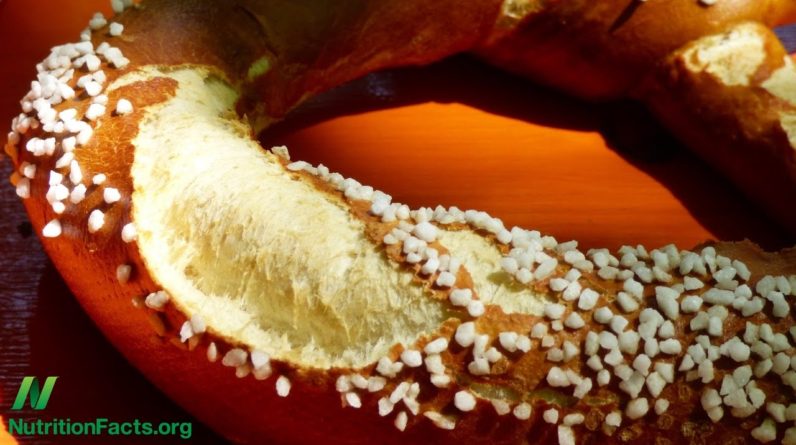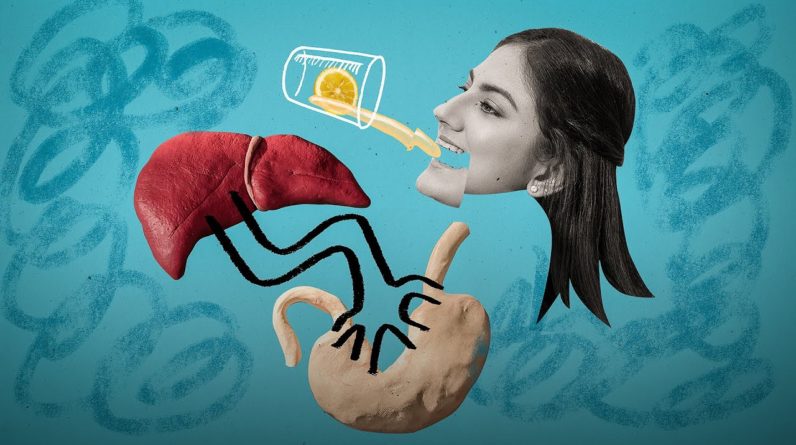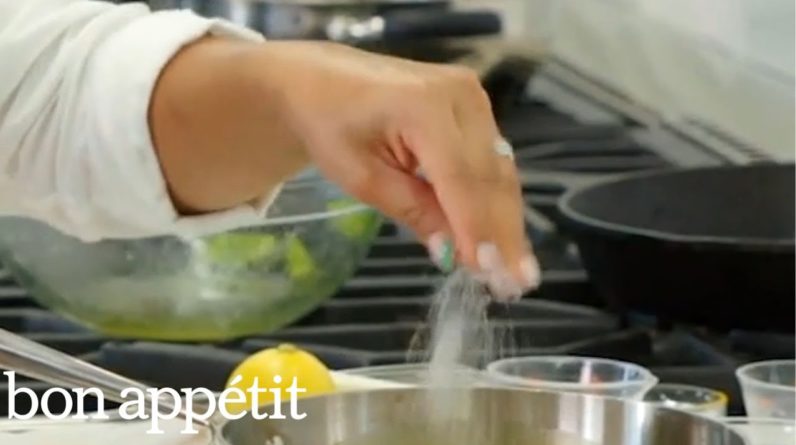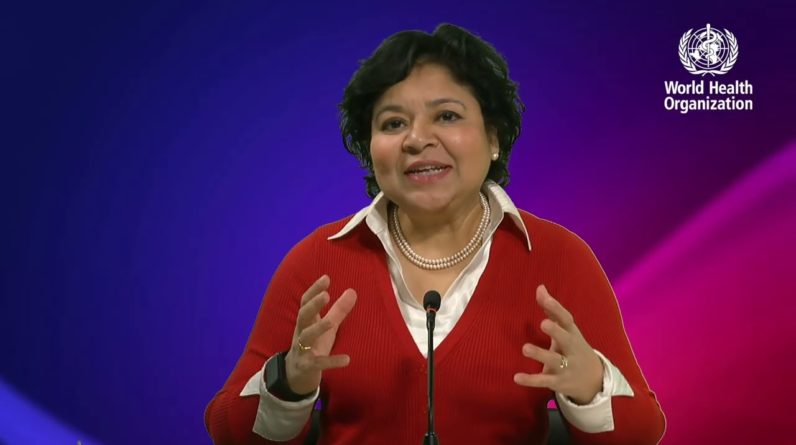
– Today we're gonna bust
some caffeine myths. Now recently a company called Lighttells made a relatively
inexpensive caffeine analyzer and so immediately I had to buy it. It's in here. Now I say relatively because
it was still around $2,500, but that's cheaper than
anything else I've seen. Now the reason I was so
interested to get it is because there's been loads
of studies on caffeine, but honestly, most of the
time I haven't really trusted either the quality of
coffee they were brewing or the quality of brewing
that they were measuring. And suddenly I could do a bunch of tests and ask a bunch of questions and get a bunch of real answers that are relevant to me
and the coffee that I drink and the coffee that you drink
at home or in cafes every day. First of all, I'll show
you how this machine works 'cause it is kind of interesting and then we'll get into the
really fascinating stuff. We're gonna cover things
from instant coffee to espresso brewing to roast levels and there are some surprises
in this whole thing.
This is it. I know it doesn't look like $2,500, it doesn't look very exciting, but I promise you it is. The way it works is kind of
annoying, if we're honest. Turn it on. That bit's fine and I'll
connect to it with my phone in a second. But we need to talk
about how you actually do a single caffeine test. And there, there's some bad news. Each test requires this
pack of reagent and stuff. There's a chip, there's some pipettes, and there's some reagent in there. Let me show you. There's a little chip. The chip is what you
insert into the machine. All of this is single usage. You can't reuse a chip,
you can't reuse a reagent.
And so each test, each single
test, requires this kit and this kit costs £7.50 per test which is wasteful and expensive. So I had to make sure
to make every test count which we did. So these two are connected
and I can begin my test. I'm gonna need to get a sample of coffee. I happen to have some coffee just here. These are kind of cool. These are pipettes that allow you to capture a very fixed,
consistent amount of liquid. That full straw section
is what you'll always get. And so we've got a full
little tube of coffee there. That gets mixed with this here reagent. In it goes, give it a shake for 10 seconds and then we just need to cover
the reading area of the chip with coffee. I can hit start and the analysis can begin. And we've got a result.
We're gonna talk about caffeine levels in a couple of different ways. We'll talk about the
total amount of caffeine in a drink and we'll also
talk about the caffeine level per 100 milliliters or deciliter. That's kind of how the
little machine works. Bear in mind that the
daily recommended allowance of caffeine for most people
is up to 300 milligrams. I did make a whole video about caffeine. I'll link it in the description down below but let's move on with that first test. So the first test we wanted
to do was filter coffee versus espresso. Was there a difference in
how much caffeine you get based on how you make your coffee? If you took 18 grams of coffee and you brewed it as an espresso,
to say 36 grams of liquid, but you extracted a fixed
amount of coffee that way, let's say 21% of the
ground coffee was extracted into the beverage, and then
you made a filter coffee with 18 grams of coffee,
same coffee again.
But here you used 300 mls
of water to extract 21%, let's say. If you compared those
two identical extractions was there a difference in caffeine? Turns out, oh wow,
there really, really is. The average espresso in testing, the whole espresso if you
drank that whole double, had 110 milligrams of caffeine. If you drank that whole filter coffee, again, from exactly the same amount of ground coffee at the start, but if you drank that whole beverage, 170 milligrams of caffeine.
That is nearly 50% more caffeine in the filtered coffee than the espresso. This absolutely blew my mind. This was astonishing to me because the extraction was the same! I could imagine a little difference but a difference this big, I could not get my head around. This needed further testing
to try and understand what exactly was going on here. This led us to the second
group of experiments. Here what we wanted to do
was track what was happening with both coffee extraction
and caffeine extraction during the course of the brew for both filter coffee and for espresso. Now the way you do this
is relatively simple. You would make a coffee as normal. Let's say you make a pour over, but underneath it, you're gonna
catch that resulting liquid in five different bowls. So you catch, say, 50
mls in the first bowl, 50 mls in the second
bowl, 50 mls in the third, and so on and so on. And so you can slice out
the brew into five parts and you can do exactly the
same thing with espresso. So you catch the first,
let's say, 10 mls in one cup, the next 10 mls in another, the next 10 mls in another.
And you can split it out. Now you have to know how
much your bowls weigh and you can calculate
then the mass of liquid exactly inside. You can then measure the
concentration of both solubles and caffeine and you can
build a cumulative chart, what's happening over time, which is what I'm gonna show you now. And we'll start with filter coffee because I think that's a
nice place to start here.
And so the first chart
that I'm gonna show you, along the horizontal x-axis, it has mass and along the vertical y-axis,
you would see extraction. Now what you're seeing
here is at the start, the extraction increases very rapidly. And if you look at the color of the liquid coming out of the bottom
of your filter cone, it is much darker. There's lots more solubles
coming out at that point. And you'll see as we progress the brew and more water passes through the coffee, that rate of extraction
starts to slow down and kind of flatten out. You know the coffee
coming through the cone right at the end looks
much, much, much paler. Let's look at exactly the same chart, but instead of total solubles, let's just look at caffeine. And again, mass along the x-axis, total caffeine on the vertical Y. And it looks very similar. At the start it extracts
really pretty quickly. And again, as we start
to run out of caffeine in the ground coffee, that rate slows. And so what you can
then do if you want to, it's a bit nerdy I know, is you can then chart solubles extraction against caffeine extraction.
And here you'll see that there's a pretty linear relationship. The more coffee you
extract from the grounds, the more caffeine you get with it. Pretty simple. But let's look at espresso because that I think is
where we see some changes. So here again, same first chart. Along the bottom we've got mass, along the y-axis we've
got total extraction. And again, espresso extracts
very quickly at the start. That first liquid out is
dense and gooey and delicious and it gets thinner and
kind of waterier as you go, so the same thing happens.
But if you look at the caffeine
versus mass chart here, you'll see that it kind of starts to look a little different. The caffeine seems to lag a little bit behind the total extraction. And so when you chart
out caffeine extraction and coffee extraction, you see quite clearly there's a big lag in caffeine extraction in the early phases and then it picks up speed. – Hi there! I just wanted to interrupt because I forgot to say this in the video.
If you pull more like a lungo, like a 3 to 1 ratio, a longer espresso, do expect more caffeine for the same overall extraction. You'll see that from this chart, again, caffeine is accelerating towards the end, and so longer espressos
do have more caffeine. Not as much a pour over,
but definitively more. Okay, thanks, bye – Now this particular shot
was with a Niche grinder. I'll show you a different chart now. This one from the OPTION-O, the P100, so are a bigger burr grinder, and here this caffeine
lag is way more obvious which I think is really,
really interesting, though that grinder extracts very, very quickly right at the start too. So it feels like some aspect
of caffeine extraction is linked to contact time. That's the only thing I could think of with the kind of variable
between these two things. Is it that just espresso
happens so quickly that there's not enough contact time to get the caffeine out, even though there is enough contact time to get all those good delicious
soluble materials out? That led to the next experiment. For this one, we required the
use of the trusty Aeropress and the experiment here
was gonna be pretty simple.
We were gonna take a
traditional Aeropress recipe, 12 grams to 200 grams of water. And what we were gonna change, for a fixed grind setting,
was just the contact time. The kind of steep time
initially before the swirl, the settle, and the press. And we did a bunch of different tests here going from a 30-second
steep to a 20-minute steep. Broadly what you'd expect to see happen with extraction, happened. The longer your contact time went on, the more you extracted.
This is news I feel to almost nobody. We know that the longer
something steeps in water, the more stuff comes out of it. However, the caffeine extraction rate very quickly started to flat line. In fact, once you'd brewed
and steeped for two minutes in that particular phase, you didn't see any additional
caffeine extraction really happening regardless
of how long you steeped for. And so you don't have to worry that having a really long steep time, which can taste really
good in say an Aeropress or even a French press, that's
not giving you more caffeine than you otherwise would have. It's seemingly having little to no impact on the caffeine once
you cross that threshold of steep time where you're
getting what you need out. I don't understand this
and I feel like this is one particular area that
needs loads more testing but there's a lot more to talk about. So we need to talk about instant coffee.
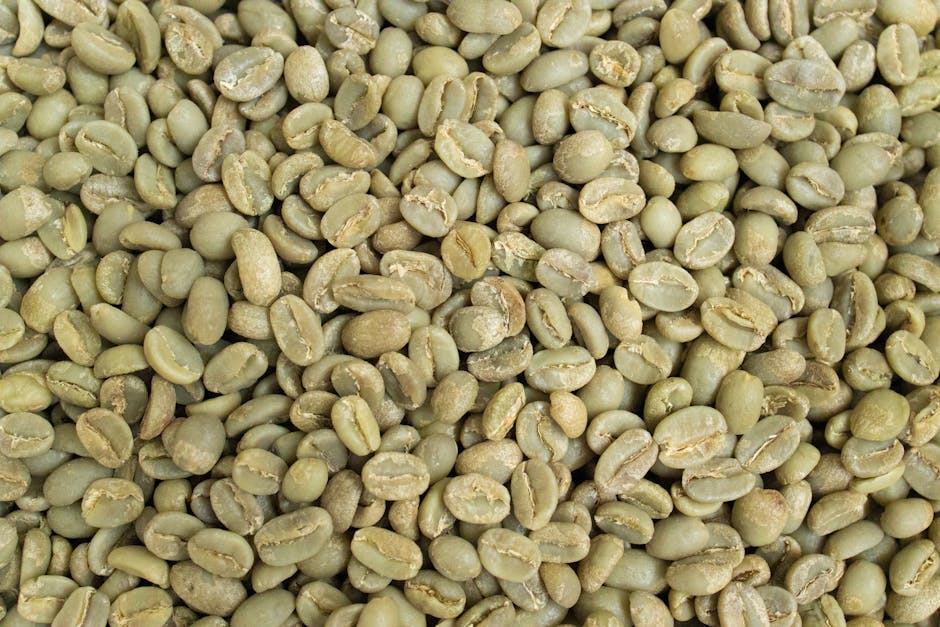
And this is one area –
this is THE area where I've made the biggest mistake and essentially spread the
most misinformation by mistake. Now I'll give you an anecdote that I've heard quite often,
people often said to me, "I used to drink instant
and now I drink specialty, I drink fresh coffee. And I feel like there's
way more caffeine in that". And I would typically reply
"that seems surprising because instant coffee
pretty much everywhere is mostly made with Robusta, as a species, which has twice the caffeine
content of Arabica". And I was also pretty confident that during the extraction
process that would've gotten all of the caffeine out of the Robusta. And so my theory had been, my presumption had been
there was more caffeine in instant coffee than there would've been in fresh coffee because
fresh coffee was made of better quality coffee that started with less caffeine in there. Then I did some testing and it did not go the
way I thought it would. Instant coffee compared to a pour over has way, way less caffeine in it.
This is a slightly tricky thing to say because obviously the way
that you make instant coffee will have a big impact on how
much caffeine is in there. Now if you get a jar of Nescafe gold, you don't have to, but if you did, it will tell you on the
side to take 1.8 grams of instant and mix that
into 200 mls of hot water. They are proposing you a cup of coffee that is incredibly weak, actually, a 0.9% strength compared
to a typical filter coffee that would be say 1.3 to
1.6, somewhere in that range. So they're saying: brew it weak. And, you know, maybe for good reason. What we wanted to do was
actually have instant be a comparable strength to filter coffee to compare those two things.
So we then took 3 grams of instant for 200 mls of water, which then gave us a
1.5% strength beverage at the end of it. So how much caffeine are we talking about? Now here, rather than talk about total beverage amounts here, we're gonna talk about
caffeine concentrations per 100 mls, per deciliter. Instant coffee made the
way they tell you to had just under 40 milligrams
of caffeine per deciliter. If you made it the way that we might to get the matching strength, that would go up to 60
milligrams per deciliter, roughly speaking. A lot of the pour overs that we measured were actually more like 80
milligrams per deciliter. That means if you made
two matching size cups of industry standard instant versus industry standard pour over, you might have twice the caffeine per serving in the specialty coffee.
This to me was shocking,
it was astonishing. And what I had massively underestimated and kind of forgotten
about was just how much of those grounds instant
coffee manufacturers are extracting. We tend to see a ceiling of about 30% being the maximum. Instant coffee manufacturers
are able to go higher through a number of processes. They're just using way,
way, way less coffee beans per cup of coffee and then getting you to make it pretty weak. Now we did go out and test the cheapest, strongest, harshest instant we could find, presuming that to be the
purest kind of Robusta, and therefore probably
the highest caffeine.
That was higher. But again, at industry
standard 0.9% strength, that was still only 55 milligrams
of caffeine per deciliter. So still not near the caffeine strength of good specialty coffee. This has definitely been
misinformation I've spread. I apologize for this now. I did not realize how wrong I was but if you have a friend or colleague that seems to get through like
five cups of instant coffee a day and be fine, well this is why. It just doesn't have
that much caffeine in it compared to good fresh coffee. As a side note, we did at one point measure the concentration of
a V60 brewed with Lavazza, which is obviously some Robusta in that. It's still fresh coffee. How is the caffeine concentration there? Yeah, it was over 100
milligrams per deciliter. So you know, again, cheaper raw materials and Lavazza Rossa does
have some Robusta in it, will have more caffeine in them.
So specialty is less caffeine
than cheaper fresh coffee but it's still more than instant. The last test that I
wanted to do for this video was one that I get asked about a lot. I was asked about it in the
recent video I did with Wired on their channel for doing coffee support. And that is, is it true
that there is less caffeine in darker roasted coffee? It a question you get asked a lot. The reason people ask it is the fact that caffeine sublimates, which means it goes from being a solid to a gas
at temperatures achieved in the upper ends of
roasting temperatures.
The idea is that as you
roast a coffee dark, you're driving caffeine out of the bean, it's sublimating out, and so dark roasts have
less caffeine in them. I was always highly skeptical of this but I wanted to test it. And so we took a coffee,
one particular coffee, we did a sample roast of it to a slightly underdeveloped,
under roasted way, a kind of normal roast, and then a dark roast into
what's called second crack which is a stage in roasting that would be a measurement
point for darker roasts. You could go much darker than this but I didn't really want to. Then we would take each
of those three samples and brew them as a pour over
to matching extraction levels. Then we'd compare the caffeine and the results were
super, super interesting.
Turns out the dark roast filter brew had the highest concentration of caffeine and it was a pretty big difference. So the dark roast brew
for a matching extraction in terms of total solubles was 72 milligrams of caffeine per deciliter. The medium roast,
traditional normal roast, had about 67.5 milligrams
of caffeine in it. And the very light, slightly
underdeveloped roast had 62 milligrams per
deciliter of caffeine in it. So that's a pretty large swing there. Now I think there's two reasons for this. Firstly, the longer you roast coffee, the less dense it gets. Like that 10 kilos of
coffee you might load into a commercial roaster, what you're getting out at the end of it is going down the longer you roast. So a light roast, you might
end up with only 8.5 kilos, with a really dark roast,
you may only end up with, say, 8 kilos of coffee.
Now a lot of what goes away is moisture but other stuff does essentially degrade and disappear out during
the roasting process. This means that to make up,
say, 10 grams of coffee, you would need more dark
roasted coffee beans. But this doesn't explain everything because actually if you count how many dark roasted coffee beans
we needed for 10 grams versus the the medium
roast versus the light, well medium to dark, you
needed about 7% on average more coffee beans to make
up 10 grams of coffee.
But we were seeing an increase in caffeine of around 8.5%. So it wasn't just that
you needed more beans. That darker roasted coffee is more porous, it's less dense, and I
think part of that means it's even easier to extract every scrap of caffeine that's in there. Conversely, that drop
in caffeine that we saw with the under-roasted coffee meant that it might just be harder
to get the caffeine out from a much denser, less
roasted coffee bean, as well as you just need less
beans to make up your dose of coffee that you're gonna start with. This I thought was super interesting and it kind of goes with my own experience and my own kind of
theories coming into this. So I was pleased to be proved right, but I definitely didn't expect the swing that we saw from light to medium to dark in terms of total concentration.
A highlight of the video for
me, a highlight of the testing! Now one thing I do wanna
acknowledge at this point is that you'll see different numbers at different times for
the same brew method. You'll see a pour over
that seems to yield 65 or 70 milligrams in one case and a pour over, same recipe,
that yields say 80 milligrams per deciliter in another place. Different coffees do have
different caffeine levels in them and that definitely
showed up in our testing. What we would definitely do
when we were testing something was use the same coffee
for say espresso and filter or the same coffee for all of the tests to try and isolate that variable.
But coffee itself is a variable. Generally when we saw
Ethiopian coffees used, they seem to have
fractionally less caffeine than other coffees we used. We didn't see a massive
variance amongst high quality, high growing specialty coffees but we did see some variance and the amount of testing
we would need to do to give you guidance there is enormous. It's on the list, but it's enormous. Generally speaking, I think we know that caffeine is the plant's
response to insects and that the higher you grow coffee, the less caffeine the
plant tends to produce. I think that's a good,
very broad rule of thumb that will absolutely
have exceptions to it, but it's a good place to start. But yeah, know that some
of the variance you'll see in those final numbers
is down to the fact that the coffee used was different 'cause we wanted to test lots of coffee, lots of grinders, lots of brewers, all of that kind of stuff, to get to useful actionable insights about how you're gonna brew and drink and enjoy coffee day-to-day. Now, I know there's other tests
you'd probably like me to do and I want to hear about them
down in the comments below.
What should I have tested, what's left out there that
you really want to know? I'd love to hear your
thoughts and your ideas. And even if you don't have an idea, let me know which of these
tests was the most interesting or relevant to you, which
was the biggest surprise. I have really enjoyed this video. This has been a massive
learning experience for me. I've definitely been humbled by it. I've been inspired by it. It's been a ton of fun. And I hope it is very useful
and interesting to you. But for now, I will say thank you so much for watching and I hope
you have a great day..


